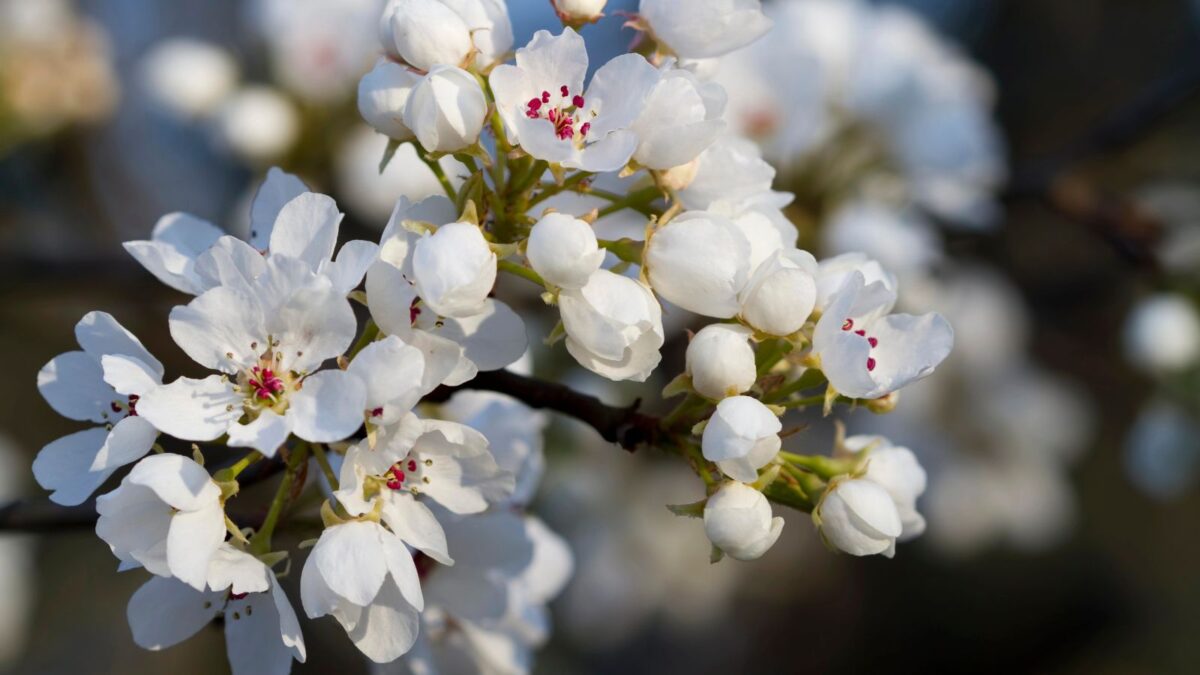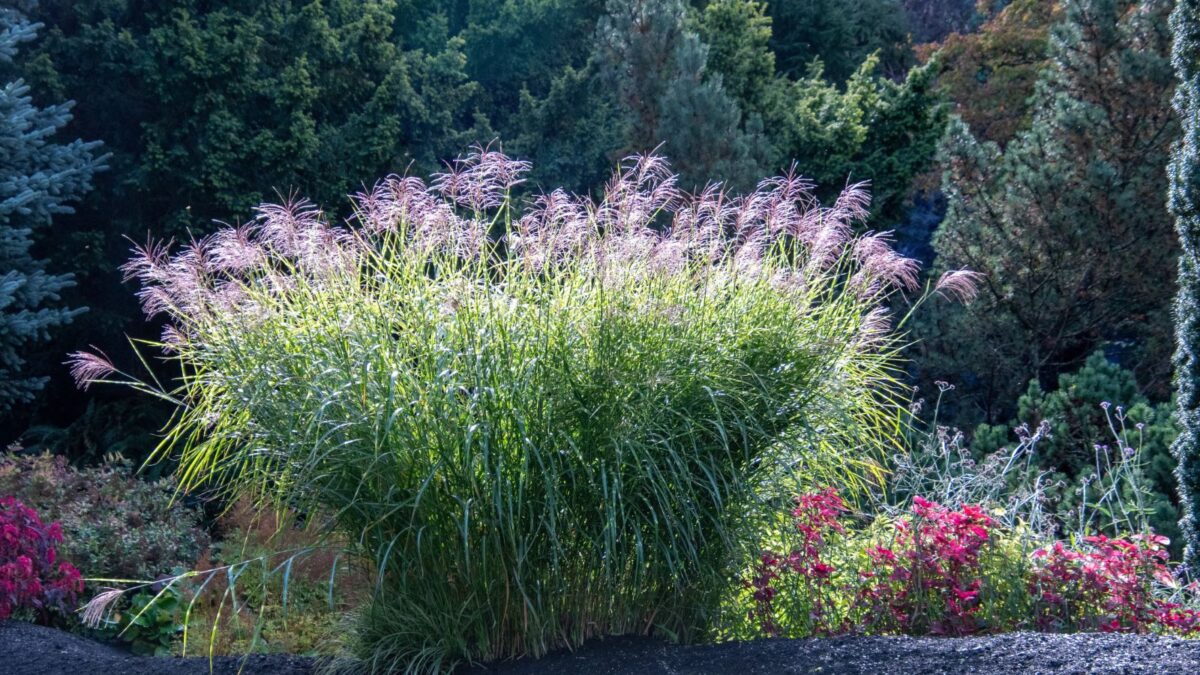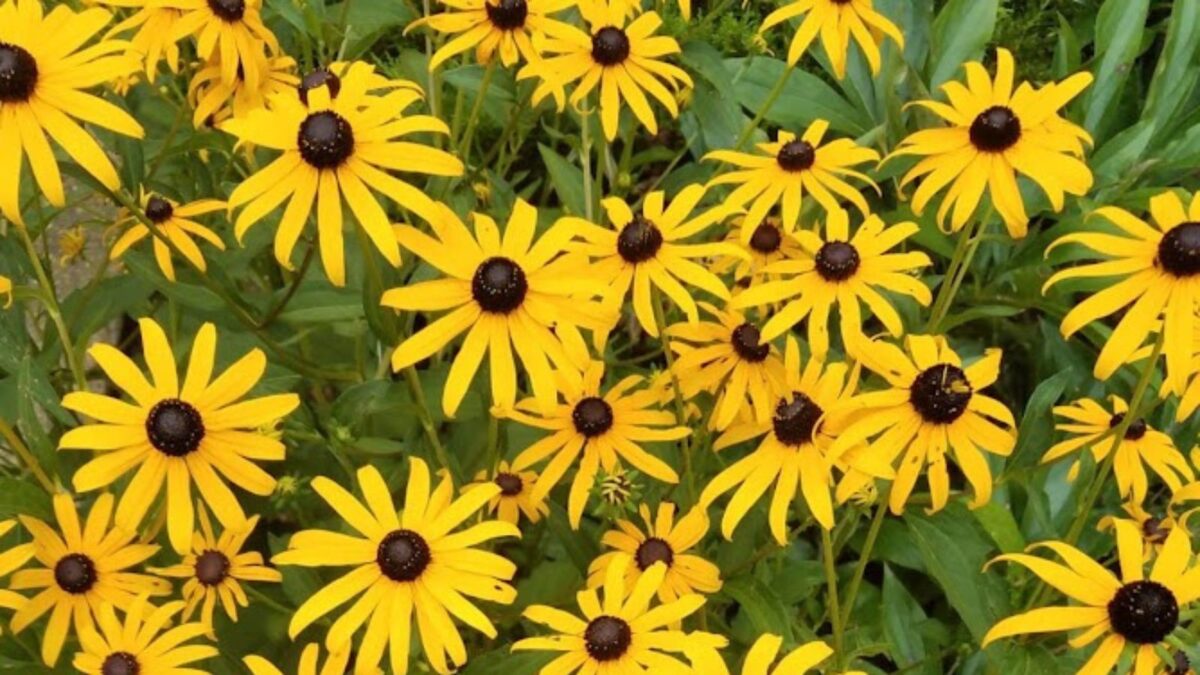Invasive species may seem like a problem reserved for forests, meadows, and other wild spaces, but they can also become a nuisance in your garden. If you’ve ever tried to get rid of English ivy, for example, you know how weedy it can be and how difficult it is to remove! Additionally, invasive plants in your garden can spread to other properties and natural areas. It’s important to be able to recognize common invasive plants in North Carolina so you can help curb their spread and preserve the natural heritage of this beautiful state.
Below are just a few of the invasive plants you may find in your backyard, but this bite-sized list is a great place to start. If you identify any invasive plants on your property, contact your local Extension office for proper removal methods, as different plants respond better to different management techniques.

1. Autumn olive (Eleagnus umbellata)

A deciduous shrub or small tree, autumn olive grows rapidly, reaching 10 to 15 feet tall and twice as wide. This highly competitive plant spreads readily via the speckled red berries eaten by birds and small mammals. Its alternately arranged, ovate leaves have silvery to brown scales and wavy margins. In late spring to early summer, fragrant, white or yellow, tubular flowers bloom in clusters.
Native northern spicebush (Lindera benzoin) has a similar size and habit, along with yellow flowers and vibrant red berries, while American beautyberry (Callicarpa americana) produces showy purplish berries following clusters of tiny but often colorful flowers.
2. Callery pear (Pyrus calleryana)

Callery pear is a deciduous tree with a dense, pyramidal shape and glossy, dark green, ovate leaves with wavy margins. Small, creamy white flowers cover the tree in early spring for a showy but malodorous display. These are followed by tiny, round, yellowish to brown fruits. In fall, the foliage becomes bronze to reddish-purple. A common cultivar, ‘Bradford Pear,’ is prone to splitting during storms.
Plant American plum (Prunus americana) for a small tree with showy early spring blooms or red maple (Acer rubrum) for a nice medium-sized shade tree with attractive fall color.
3. Chinese silvergrass (Miscanthus sinensis)

Chinese silvergrass, also called maiden grass, is a common ornamental grass with an erect, clumping habit. Growing up to 12 feet tall, it is often left standing through the winter for its attractive buff-colored stalks and foliage and fluffy fruiting heads. The eight-inch terminal inflorescence has finger-like racemes covered in paired, inch-long spikelets with long, silky hairs for a cloudlike appearance.
Native giant plumegrass (Erianthus giganteus) also reaches impressive heights, while splitbeard bluestem (Andropogon ternarius), though significantly shorter, produces lovely fluffy seed heads.
4. Chinese and Japanese wisteria (Wisteria sinensis, W. floribunda)

Known for their long, dangling clusters of stunning purple flowers, Chinese and Japanese wisteria are woody, deciduous, twining vines with pinnately compound leaves. The fragrant, pealike blossoms bloom on racemes up to 12 inches long in spring and are followed by velvety seed pods that ripen in the fall. These large vines spread aggressively via surface runners and can easily smother shrubs and trees and form dense thickets.
American wisteria (W. frutescens) has a very similar appearance to its invasive counterparts, but without the aggressive spreading habit. Blue jasmine (Clematis crispa) also produces showy, fragrant blossoms and will rebloom in fall, as well as occasionally in summer.
5. English ivy (Hedera helix)

English ivy is an unfortunately common evergreen vine. It can be easily identified by its glossy, dark green or variegated leaves with three to five palmate lobes. Foliage on mature, woody stems tends toward a more ovate shape. In early fall, mature English ivy produces clusters of tiny, greenish-white flowers, followed by toxic blue-black berries that resemble a bunch of grapes.
Similar native vines include the evergreen Carolina jessamine (Gelsemium sempervirens), featuring yellow, trumpet-shaped flowers, and climbing hydrangea (Hydrangea barbara).
6. Japanese stiltgrass (Microstegium vimineum)

An annual, Japanese stiltgrass grows up to three and a half feet tall. While the upper stems are more erect, the lower stems have a spreading habit and are often held up by stilt-like roots. The linear-elliptic leaves average three inches long and each have a silvery, off-center midvein. The grass-like blooms consist of one- to three-inch racemes, each with several pairs of spikelets.
Shorter native grasses include little bluestem (Schizachyrium scoparium) and the incredibly showy pink muhly grass (Muhlenbergia capillaris).
7. Mimosa (Albizia julibrissin)

The mimosa is also called a silk tree due to its fragrant, showy flowers, which have long, silky, pink threads that give the blossoms a wispy appearance. They bloom around May to July. This fast-growing, short-lived tree grows 10 to 50 feet tall and about as wide. When not in bloom, the tree can be identified by its light, feathery foliage. It has compound leaves with as many as 30 pinnae each, and each pinnae has 10-20 tiny leaflets that close downward at night and during rain.
Plant American fringetree (Chionanthus virginicus) for masses of unique, fragrant, fringe-like blossoms in the spring, or choose eastern redbud (Cercis canadensis) for vibrant pink spring color.
8. Tree of heaven (Ailanthus altissima)

Though a small tree, tree of heaven forms dense thickets that crowd out native plants. Its large, compound leaves have anywhere from 10 to 41 leaflets, each with a glandular, notched base and serration only toward the base. Crushing a leaf or scratching the bark releases a foul, pungent odor often compared to cat urine or skunks. In spring, yellow flowers bloom in large, showy clusters held above the foliage.
Native smooth sumac (Rhus glabra) has a very similar appearance and habit to tree of heaven, and flowering dogwood (Cornus florida) makes for a beautiful small ornamental tree.
By identifying invasive plants on your property and replacing them with beautiful native species, you can help protect North Carolina’s wonderful natural heritage. Now that’s a garden to be proud of!
19 Beautiful Bird-Friendly Native North Carolina Plants To Replace The Invasives You’ll Remove

This North Carolina native plants list will help you choose plants for your garden or landscape that are friendly to native birds and other local wildlife.


